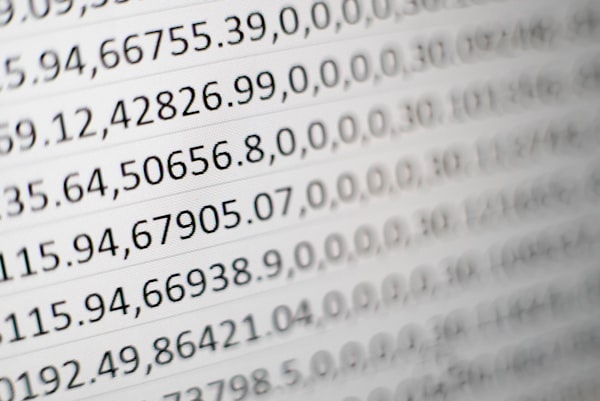Shift Differential Premiums
Articles discusses extra compensation paid at a premium rate for certain hours worked by an employee.

Companies who run their operations 24/7/365 face the challenge of having to schedule employees to work unpopular times, beyond standard day shift hours. So, this begs the question, does your company offer anything extra to incentivize your employees to work those less-desirable shifts? Do you believe your employees are happy working Afternoon shifts (aka 2nd shift, swing shift) or Graveyard shifts (aka 3rd shift) for nothing more than a Thank You and a pat on the back? My guess is, probably not. Not when the employer down the road offers an extra $2 bump per hour for their employees who work the same shifts. Most organizations that run these less-desirable shifts offer their employees extra compensation, more commonly known as a Shift Differential, to entice them to accept the work, increase job satisfaction and productivity.
In this article, we will discuss what Shift Differential is, the considerations that need to be made when implementing a Shift Differential policy, and, perhaps most importantly, how to go about calculating shift differential premiums on an employee’s timecard.
What is Shift Differential?
Shift differential is a premium paid to employees for working less-desirable shifts that employees may not otherwise willingly volunteer for without something extra to sweeten the deal, such as an increase in their hourly rate or an additional percentage of their base pay. There are no federal laws in Canada or the US that require employers to pay shift differential premiums, it’s rather a matter of agreement between employer and employee. However, most companies that run afternoon, and graveyard shifts offer some type of shift differential payment to their employees who work outside of the regular day shift hours.
Shift Differential Considerations
There are a few considerations to make while developing a shift differential policy, such as what reason codes it should apply to (it may not apply if the employee is travelling or in a meeting), when it should apply (it could apply based on certain shift cycles, shift types, or between certain times), and how it will be calculated (it could be a percentage of base wages or as an additional flat amount per hour).
Shift differential premiums may vary depending on the time and length of a shift or the type of shift. The hours associated with graveyard shifts generally receive a higher shift differential premium amount than afternoon shifts.
The job function and level of responsibility may also have an impact on the shift differential compensation. For example, employees with more responsibilities, like managers or lead hands, usually qualify for higher shift differential payments than other employees working the same shift.
How to Calculate Shift Differential
Let’s have a look at a few different scenarios of how to calculate shift differential on an employee’s timecard, using these two employee rate & shift type examples;
- Example 1: Katie, who has a base hourly rate of $35/hr, has been scheduled to work a 12-hour graveyard shift that starts at 6:00pm and ends at 6:00am.
- Example 2: Rhonda, who has a base hourly rate of $40/hr, has been scheduled to work an 8-hour afternoon shift that starts at 2:00pm and ends at 10:00pm.
Scenario #1: Shift differential is paid at 10% of the employee’s base rate and applies between the hours of 6:00pm and 6:00am
First, determine the number of hours that qualify for the Shift Differential Premium for each employee
- Katie worked between 6:00pm and 6:00am, her full 12-hour shift will qualify for shift differential
- Rhonda worked between 2:00pm and 10:00pm, only 4 hours of her shift (between 6:00pm – 10:00pm) will qualify for shift differential
Next, calculate the rate that the Shift Differential will be paid at by taking the hourly base rate and multiplying it by 10%
- Katie: $35.00 x 0.10 = $3.50
- Rhonda: $40.00 x 0.10 = $4.00
Next, multiply the qualifying hours by the shift differential rate to determine the total shift differential payment that’s due
- Katie: 12 x $3.50 = $42.00
- Rhonda: 4 x $4.00 = $16.00
To determine the total gross pay, add the total base pay (total hours worked x base rate) to the total shift differential payment
- Katie: 12 x $35.00 = $420.00 + $42.00 = $462.00 total gross pay
- Rhonda: 8 x $40.00 = $320.00 + $16.00 = $336.00 total gross pay
Scenario #2: Shift differential is paid at a flat rate of $3.25 per hour for the full 8-hour afternoon shift and $4.50 per hour for the full 12-hour graveyard shift
First, multiply the worked hours by the shift differential rate to determine the total shift differential payment that’s due
- Katie: 12 x $4.50 = $54.00
- Rhonda: 8 x $3.25 = $26.00
To determine the total gross pay, add the total base pay (total hours worked x base rate) to the total shift differential payment
- Katie: 12 x $35.00 = $420.00 + $54.00 = $474.00 total gross pay
- Rhonda: 8 x $40.00 = $320.00 + $26.00 = $346.00 total gross pay
Scenario #3: Shift differential is paid at a flat rate of $3.25 per hour between the hours of 6:00pm and 12:00am and $4.50 per hour between the hours of 12:00am and 6:00am
First, determine the number of hours that qualify for the Shift Differential Premium for each employee
- Katie worked between 6:00pm and 6:00am, 6 hours will qualify for the $3.25 rate and 6 hours will qualify for the $4.50 rate
- Rhonda worked between 2:00pm and 10:00pm, 4 hours will qualify for the $3.25 rate
Next, multiply the qualifying hours by the shift differential rate to determine the total shift differential payment that’s due
- Katie: 6 x $3.25 = $19.50 & 6 x $4.50 = $27.00
- Rhonda: 4 x $3.25 = $13.00
To determine the total gross pay, add the total base pay (total hours worked x base rate) to the total shift differential payment
- Katie: 12 x $35.00 = $420.00 + $19.50 + $27.00 = $466.50 total gross pay
- Rhonda: 8 x $40.00 = $320.00 + $13.00 = $333.00 total gross pay





